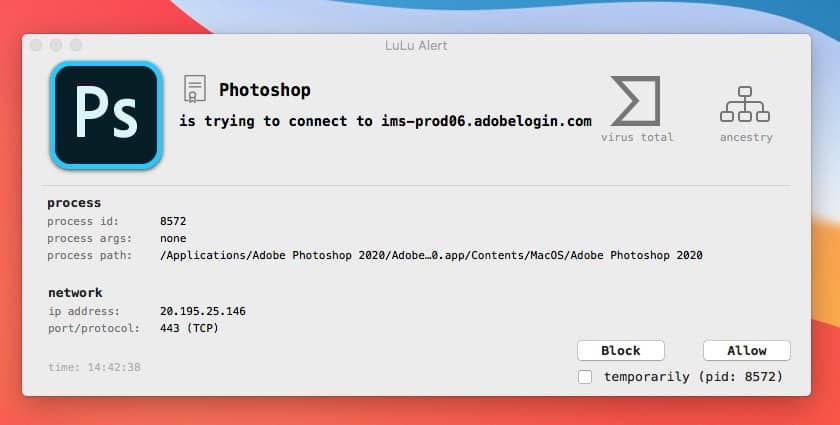
- Please contact your Internet service provider since part of their network is on our block list (S3150).' There is absolutley NOTHING wrong with this IP address - it is as clean as a whistle. Yet Microsoft routinely blocks IP addresses that are new and have no reputation.
- While ZenMate VPN extension hides your IP address for browser traffic, it cannot prevent IP leaks caused by the Flash Player, and WebRTC is a well-known security threat for all VPNs. But don’t worry, there are ways to get around these issues.
- To disable IP address obfuscation globally, go to Administration Privacy, select Do not obfuscate IP addresses, and click Save. To disable IP address obfuscation for specific countries, find the countries in the Selected for Obfuscation list, then click their corresponding X icon. Click Save when you’re done.
By default, Adobe Connect listens on port 1935. Sometimes it is necessary to open ports 80 and 1935 for the Connect servers in the corporate firewall/proxy as well as on the clients running software-based firewall (Participants or Presenters).
Adobe Blocks For Sale
Configure IP addresses and ports. Use the ams.ini file to configure the IP addresses and ports on which Adobe Media Server listens for requests. Open rootinstall /conf/ams.ini in a text editor. Note: By default, Adobe Media Server installs to C: Program Files Adobe Adobe Media Server 5.
Sometimes, the client's corporate firewall or proxy server blocks port 1935 for incoming and outgoing network traffic. It's necessary that the customer's on-premise infrastructure allows the Real Time Management Protocol traffic (RTMP) to flow whether on port 1935 or another port for incoming and outgoing network traffic to facilitate an Adobe Connect Meeting.
When it is impossible for the client to open their corporate firewall or proxy server to accept network traffic on port 1935, the best approach to the problem is to enable SSL for RTMP; RTMPS will then listen at a secure VIP (either in stunnel or on an SSL accelerator or hardware-based load balancing device such as F5 Local Traffic Manager) on 443 and talk back to the Adobe Connect server pool on port 1935.
To set your Adobe Connect server or cluster of servers for SSL, see the following references:
Even though the best practice is either implementing SSL or opening 1935, there may still be the need to route unsecure RTMP on a port other than 1935; in these cases you must configure the Adobe Connect server to properly to open and listen on additional ports besides 1935 to accommodate the network restrictions limitations and constraints.
Adobe Connect consists of two servers, the application server (Tomcat) and the meeting server (FMS/AMS). Assuming your single Adobe Connect server only has a single IP address and one Fully Qualified Domain Name (FQDN), you need to configure a second IP address and FQDN in DNS in order to bind the two Adobe Connect services to port 80. Make sure your new FQDN resolves to the new second IP address. The second IP and FQDN will be used for the meeting traffic.

We will use the following example FQDNs for purposes of illustration:
- connect.adobe.com 192.168.0.1
- meeting.adobe.com 192.168.0.2
This is how they appear under the Server Settings tab of the Adobe Connect Server Configuration Wizard accessible locally on the server on port 8510 or through the Windows Program Menus as depicted:
To add 80 ports 80 an 443 for RTMP traffic on the new meeting.adobe.com FQDN, go to the custom.ini file in the Adobe Connect root installation directory, back the file up and edit it as follows by adding the following lines where 192.168.0.2 depicts your actual Meeting IP address:

DEFAULT_FCS_HOSTPORT=192.168.0.2:80,443,1935
RTMP_SEQUENCE=rtmp://external-host:1935/?rtmp://localhost:8506/,rtmp://external-host:80/?rtmp://localhost:8506/,rtmp://external-host:443/?rtmp://localhost:8506/
Note: If an RTMP sequence already exists in the the custom.ini then either comment and replace it with the above example or edit it to match the above example.
Save the custom.ini file and restart the AMS/FMS and Connect services:

Adobe Email Address
After the services are back up and online, test an Adobe Connect Meeting while blocking 1935. The RTMP string that you added to the custom.ini will try 1935, 443 & 80 for RTMP traffic routing.
Note: In versions of Adobe Connect later than 9.2, it will be necessary to also edit the server.xml file in the appservconf directory on the Adobe Connect server to add the Meeting IP address. As with the custom.ini, backup the server.xml and then look for this line:
Block Adobe Ip Address Host File Mac
<Connector port='80' protocol='HTTP/1.1' executor='httpThreadPool' enableLookups='false' acceptCount='250' connectionTimeout='20000' redirectPort='443' URIEncoding='utf-8'/>
Add the Meeting server IP as follows:
<Connector port='80' protocol='HTTP/1.1' address='192.168.0.2' executor='httpThreadPool' enableLookups='false' acceptCount='250' connectionTimeout='20000' redirectPort='443' URIEncoding='utf-8'/>
Save the server.xml and cycle the services as in the previous step.
